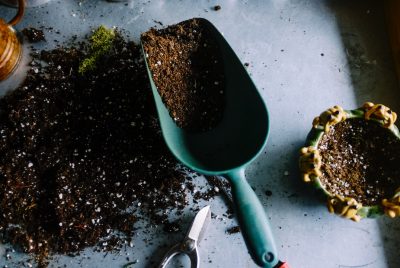Blueberry: Fertilizer Guide
Deprecated: The PSR-0 `Requests_...` class names in the Requests library are deprecated. Switch to the PSR-4 `WpOrg\Requests\...` class names at your earliest convenience. in /home/littlegr/public_html/wp-includes/class-requests.php on line 24
Hey there fellow gardeners and blueberry enthusiasts! Do you adore the sweet, succulent goodness of fresh blueberries? Then you are in for a treat. In this article, I’m going to guide you through the intricate art of nurturing blueberry plants, whether in your garden or on your balcony in containers. We’ll focus on the types of blueberry fertilizer available, and I’ll provide you with valuable insights, suggestions, and the best times to ensure your blueberry harvest is nothing short of spectacular.
Understanding Your Blueberry Plant
Before we dive into the details of blueberry fertilizer, let’s get to know your blueberry plants a little better. Blueberries belong to the Vaccinium genus and come in various species and varieties, with the most common being highbush, lowbush, and rabbiteye. Understanding the specific type you’re growing is essential because each has its unique requirements. Nevertheless, blueberries thrive in well-draining, acidic soil with a pH level between 4.5 and 5.5. If it begins to stray, amendments with elemental sulfur can help lower the pH. If you are unsure of the type of soil you have and pH level of your soil, be sure to do a soil test before planting your blueberries. There are several types of soil testing kits that you can purchase online.
The Right Fertilizer Composition
Blueberry bushes are rather finicky when it comes to nutrients. Blueberry requires a balanced fertilizer consisting of a blend of macro and micronutrients, with a particular emphasis on acidic soil amendments. You should aim for a fertilizer with a composition of approximately 10-10-10, which represents the ratio of nitrogen (N), phosphorus (P), and potassium (K). Additionally, incorporating organic matter like peat moss or well-rotted compost can work wonders for the soil structure and acidity.
Organic vs. Synthetic Fertilizers
The choice between organic and synthetic fertilizers is a matter of personal preference. Organic options, like well-rotted compost or aged manure, offer long-term benefits, improving soil structure and microbial activity. Synthetic fertilizers, however, provide precise control over nutrient levels and release rates. Consider your gardening philosophy and choose the one that aligns with your goals.
Slow-Release Fertilizers
Slow-release blueberry fertilizers are excellent for blueberries because they gradually release nutrients over an extended period. This approach prevents the risk of over-fertilization and ensures a consistent supply of nutrients to your plants. Look for slow-release options tailored to acid-loving plants.
pH-Adjusting Fertilizers
Sometimes, your blueberry bushes may need a pH adjustment, especially if your soil is too alkaline. Fertilizers designed for acid-loving plants can help lower the soil pH over time. Keep a close eye on your soil’s pH and adjust as necessary.
Consideration of Micronutrients
Blueberries are particular about their micronutrient needs, especially iron and manganese. If you notice signs of deficiency, like yellowing leaves with green veins, consider adding a micronutrient supplement or chelated fertilizers containing these elements.
Measuring the Right Amount
When fertilizing, always measure the correct amount to avoid over-fertilization, which can harm your plants. A general guideline is to apply 1 to 2 ounces of fertilizer per plant for the first year. Gradually increase the amount by an ounce each year until you reach a maximum of 8 ounces for mature bushes. Blueberries have very shallow root system. Over-fertilization can cause root burn which is detrimental to your plants! So remember to fertilize sparingly or follow the instruction on the packaging of the fertilizers for blueberries.
The Watering Factor
Proper watering practices complement your fertilization efforts. Blueberries require consistently moist, well-draining soil. Over-watering can leach essential nutrients, so maintain a balance, ensuring your blueberries never dry out or become waterlogged.
Avoid Fertilizing Too Late
It’s crucial not to fertilize your blueberry bushes too late in the growing season. Late-season fertilization can stimulate new growth that’s susceptible to frost damage. To avoid this, cease fertilization around mid-summer.
Last words
In the wonderful world of blueberry cultivation, fertilization plays a pivotal role in nurturing thriving plants and enjoying bountiful harvests. By understanding the specific needs of your blueberry bushes, choosing the right fertilizers, and timing your applications strategically, you’ll be well on your way to a flourishing blueberry garden or balcony container. Don’t forget that patience and consistency are your best allies on this fruitful journey.
FAQs
- When is the best time to plant blueberry bushes?
- The ideal time to plant blueberry bushes is in early spring or late fall when the plants are dormant.
- Can I use coffee grounds to acidify the soil for blueberries?
- Yes, coffee grounds can help acidify the soil, but use them in moderation as a supplement to other soil amendments.
- How can I test the pH level of my soil for blueberries?
- You can use a pH testing kit or meter, available at most garden centers, to monitor and adjust the soil’s pH.
- Do blueberry bushes need full sunlight to thrive?
- Blueberry bushes prefer full sun but can tolerate partial shade. However, they produce the best fruit in full sunlight.
- What are common signs of over-fertilization in blueberry plants?
- Signs of over-fertilization may include burnt or scorched leaves, excessive growth, or nutrient runoff. Always follow recommended guidelines for fertilization.






Comments are closed.